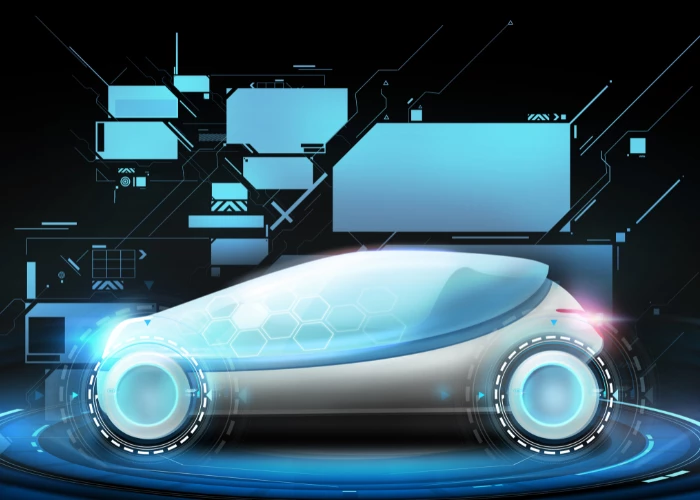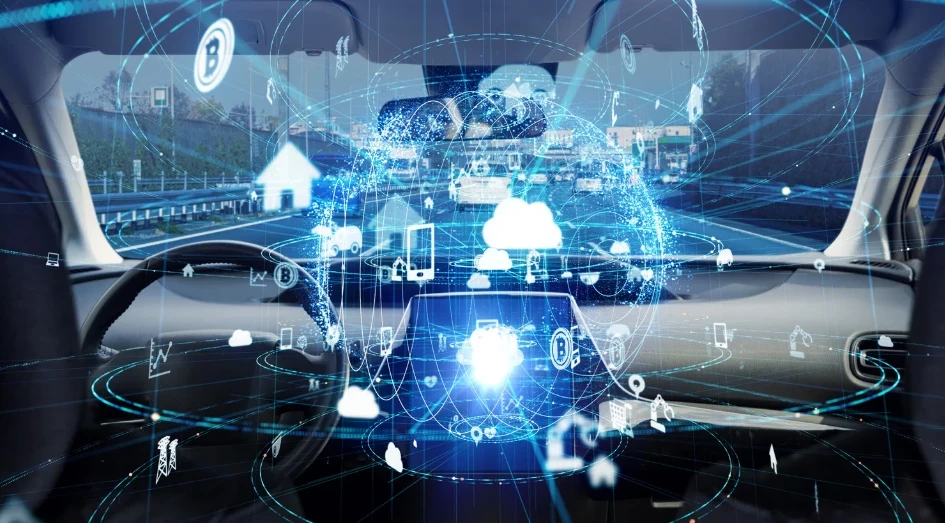Responding to the technology shift taking place in the auto industry, two traditionally fierce competitors, the BMW Group and Daimler AG, recently announced they would invest more than €1 billion ($1.13 billion) to form a joint venture offering customers a single source for sustainable urban mobility service solutions.
The significance of the tie-up can be better understood in light of Silicon Valley startup Ridecell’s findings that such business models could realize a market cap of $9 trillion by 2030 – that's six times the estimated market cap of all automotive companies today, according to Mark Thomas, Ridecell's vice president of marketing and alliances.
Driven by the potential of the market, interest in mobility services is heating up, as demonstrated in the chart below showing the number of companies talking about mobility services in their earnings calls.
Image Source: CB Insights
By signing the agreement to merge their mobility services business units, the two luxury brands have managed to nimbly outflank their competition. The equally-owned joint venture model plans to combine and strategically expand the companies’ existing on-demand mobility offerings in the following five areas:
1) Multimodal and on-demand mobility with moovel and ReachNow
2) Car Sharing with Car2Go and DriveNow
3) Ride-Hailing with mytaxi
4) Parking with ParkNow and Parkmobile Group/Parkmobile LLC
5) Charging with ChargeNow and Digital Charging Solutions
While this places the companies in a very strong position to explore and even dominate the mobility services sector, there is an asset that in the long term may prove even more valuable: data.
Forget oil, future vehicles will run on data
For more than a century, the automobile industry has been a hotbed of innovation. Now, in its second century, the pace of innovation is accelerating.
In a recent interview with McKinsey and Company, Ford’s Hau Thai-Tang had this to say: “This industry has seen more changes in the past decade than perhaps in the prior hundred years. That’s due to a combination of things. One is ubiquitous connectivity and the internet, which changed how people network, procure, consume, and enjoy goods and services. Sharing and contextual ownership are important changes as well.”
IHS Automotive forecasts that there will be 152 million actively connected cars on global roads by 2020. The combination of new car features and aftermarket devices could mean nearly two billion connected cars on the world’s roadways by 2025.
Conservative estimates from IHS Automotive state the average car could produce up to 30 terabytes of data each day. Hidden in this data are valuable clues regarding the performance and health of the vehicle, as well as information about the driver and passengers. For instance how, when and where the vehicle is driven; the driver’s driving style and in-vehicle preferences; passengers’ infotainment choices, and much, much more.
So what is the relevance of the fusion of the two companies’ mobility services business units to this data?
Crowd-sourced vehicle training
For one, teaching vehicles to drive themselves in a failsafe manner continues to challenge the best minds across the automotive and technology landscape. And as with humans, machines also ‘learn’ from experience – for any given situation, both humans and machines must first absorb experiences (data), followed by applying a set of rules (algorithms) that facilitate problem solving. When outcomes are either positive or negative, both humans and machines learn from the exercise.
Image Source: Wards Auto/Cloudera
As illustrated, the autonomous driving teaching process begins on the left side of the diagram, with collecting large volumes of real-world driving data.
To effectively ‘train’ self-driving vehicles requires millions of sets of ordered data, or ‘points’, that are both time consuming and expensive to gather.
By virtue of the fact that the merger of both companies’ fleets significantly increases the number of vehicles generating data means that, when developing self-driving vehicles, both companies have access to significantly larger libraries of information than they would have had. This can improve functional performance and cut development time and costs.
The logical next step would be to join forces on automated driving, and in late February 2019 the two companies signed a Memorandum of Understanding to jointly develop the technology, stating they would initially focus on advancing the development of next-generation technologies for driver assistance systems, automated driving on highways and parking features (up to SAE Level 4).
And data collection from this extended fleet of vehicles will not only come in handy when developing self-driving technologies: As vehicles transform from ‘driver experience- to user experience-centric,’ information about driver and passenger preferences and behavior will unlock untold value for manufacturers and service providers.
The money’s in the data
Automakers have long understood how providing good experiences helps build affinity, trust and loyalty with their customers. Now through the use of data, automotive companies have an opportunity to monetize information through value added connected services.
Though GPS functionality has supported navigation systems for years, smarter applications of the data harvested is adding significant value in the form of real-time traffic updates and road safety alerts.
Uses for vehicle health and operational functionality data are also spreading as vehicle manufacturers continue to develop app-based tools to monitor key maintenance statistics. And while the use of advanced biometric data is still in its infancy, new sensors in the cockpit can allow vehicles to monitor key attributes of their occupants, including stress levels, heart rhythms, alcohol consumption, and fatigue.
However, monetizing this tremendous increase in operational and behavioral data is easier said than done – and OEMs have largely been lagging behind market disruptors entering this space. There is also good reason to wonder whether a critical mass of consumers see the increase in vehicle connectivity as a good thing.
Recent study results suggest that while 79 percent of consumers in China believe increased connectivity will be beneficial, only 35 percent of German consumers feel the same.
One of the first decisions for companies aiming to monetize vehicle data is where to play in the connected vehicle value chain. Potential roles exist for companies to act as:
- Generators – making end products capable of capturing data
- Transmitters – safely delivering the data to a central repository
- Manipulators – aggregating data from different sources into a usable format
- Developers – designing end-user offerings that leverage the data
- Providers – marketing the service offerings to both B2C and B2B networks
Not every company is well-placed to succeed in each part of this value chain. For new entrants in particular, it can be difficult to create value further down the chain without access to the data being generated further upstream. Herein lies one of the central issues that is currently preventing the vehicle data monetization ecosystem from developing to its full potential, and one which the merger could solve. By owning and operating these diverse mobility services business units at scale, the partners will not only own the data but also be able to find the best ways to integrate this into their unfolding business models.
In terms of external revenue opportunities, OEMs and other industry players are exploring a wide variety of data-based products and service offerings, including user-based insurance, mobile commerce, mobility-as-a-service (MaaS), behavioral and geo-based advertising, infotainment, and personal health monitoring.
Leveraging the experience and data gained from the extended fleet will speed up the understanding and implementation of services and solutions that can be monetized while still enhancing the user experience. The companies will have the advantage that all vehicles are under their control making tweaks to immature technologies and models a lot simpler.
Notwithstanding the obvious advantages that the partnership brings, with regard to data driven features and services, there are still areas that remain grey and shrouded in uncertainty:
- Who owns the data and who gets to use it? The most interesting data sets are often the ones that are shared across connected ecosystems that include consumers, OEMs, and service providers. However, recent study data suggests that consumers are not fully comfortable with any one type of company managing their connected data
- How can data be protected? Consumers may be more willing to share data for services and features that have a perceived benefit. Tech companies have been taking advantage of this for some time, so OEMs may have much to learn from them. However, any company will likely quickly lose customers’ trust if the data they share is compromised
- Are consumers willing to pay for connected data services? Consumers have come to expect basic services and free apps, so how can they be motivated to pay? Probably, the full spectrum of services will include both free and paid services.
In an age of connectivity it is no longer sufficient to deliver the passenger to his or her destination; the passenger’s other needs must also be met. Thus, while the BMW/Mercedes venture might not have all the answers, it certainly gives the two companies a sound foundation from which to explore data collection and monetization to satisfy both the consumer’s needs as well as speed up the refinement of the business model.

























